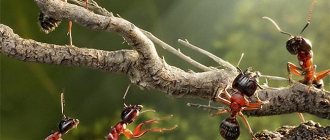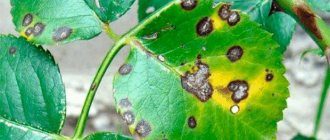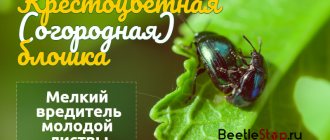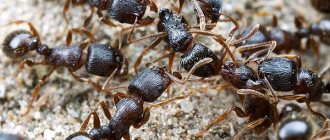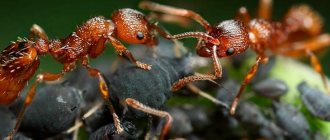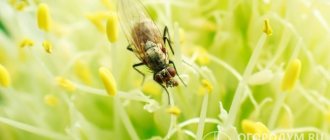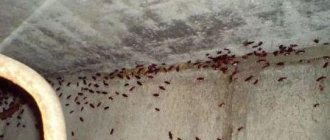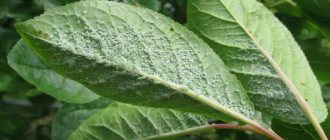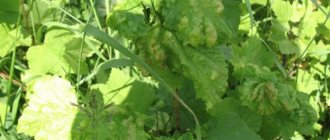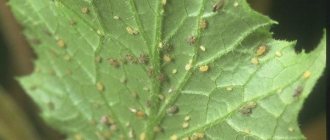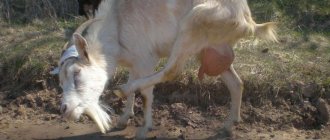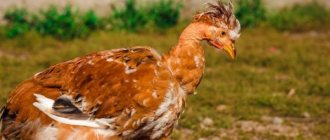The cherry orchard attracts ants with its sweet juice. However, to obtain it, inventive insects use the “services” of aphids. This is an inextricable alliance operating on mutually beneficial terms. Ants carry aphids to the most succulent trees, in return they receive a sweet substance secreted by the aphids after sucking out plant sap. Before looking for the answer to the question of how to get rid of ants on cherries, you need to think about killing aphids.
Banishment by smell
To repel pests, you can use plants, flowers, and strong-smelling substances.
- You can treat cherries against ants and aphids with garlic juice. Use the head or arrows of a winter plant. It is necessary to rub the trunk around. The persistent smell of garlic will scare off new pests and make established ones flee.
- Twigs of wormwood and tansy are tied around the trunk. The plants are absolutely safe for the tree; they not only repel ants, but also cause toxicosis. It is necessary to prepare a tincture from these plants and coat the cherries. Pour 30 g of dry potion, 300 g of fresh flowers and 10 liters of water. They insist for a day. You can prepare a more concentrated composition, the cherries will not be harmed.
- Cotton wool and wool are soaked in carbolic acid and tied with a belt around the trunk of the cherry tree. Removed after 3 days. Repeat the procedure several times until the ants' interest in cherries disappears.
Insects cannot tolerate the smell of anise, elderberry, peppermint, calendula, cloves, and tomato tops. These components can be used to construct belts, lay them around cherries, scatter them throughout the area, or grow plants in the garden. The protection lasts as long as the smell persists.
Herbal infusions
Despite the fact that herbal infusions and decoctions are not chemicals, one should not lose sight of the fact that they:
- in high concentrations can cause burns to plants;
- can be dangerous not only for aphids, but also for other insects;
- at least some of them are poisonous to humans.
Therefore, you need to use such drugs wisely, observing safety precautions, formulation and
- Before first use, any solutions must first be tested on a limited area, and only then, after making sure that the product is effective, should it be used over the entire area;
- fruit crops can be treated with decoctions and infusions during the budding period, immediately after flowering and no later than 14-40 days before harvest;
- It is recommended to treat berry crops with infusions before flowering and after the berries are picked;
- Vegetable crops can be sprayed for the last time with herbal infusions no later than a month before harvesting the fruits.
By following these simple rules, you will cause irreparable damage to the aphids, and you will not harm yourself.
30-35 g chopped heads
(you can add onion peels) leave in 1 liter of water for 5 hours. Add 4-5 g of laundry soap. Strain. Bring the volume of infusion to 1 liter.
200 g chopped heads
Infuse for 4-5 days in 1 liter of water under a lid. Use as a solution: 25 ml of infusion per 10 liters of water.
Infuse 200 g of crushed dry leaves in 5 liters of water for 2 days. Then increase to 10 l. Strain.
- Infuse 100 g of dry herbs and chamomile inflorescences in 1 liter of water for 12 hours. Spray with a solution: 1 part infusion and 3 parts water, with the addition of soap (at the rate of 4 g per 1 liter of solution);
- Crush 250 g of Dalmatian (Caucasian) chamomile flowers into powder and stir in water. Spraying should be done immediately after preparation.
- Infuse 400 g of leaves and 200 g of roots of flowering dandelions for 3-4 hours in 10 liters of water.
- Infuse 30 g of dry dandelion leaves and roots in 10 liters of water for 3 hours.
Fill half a bucket of chopped plants with flowers with water to the top, leave for 2 days. Strain, add 40 g of soap per 10 liters of water.
Pour 400 g of horse sorrel roots with hot water and leave for 3 hours.
1 kg fresh peppers
(or 300 g of dry) leave for 24 hours in 10 liters of water. Spray with a solution: 1 part infusion to 10 parts water.
1 kg of needles
100 g dry peels of any kind
pour 1 liter of warm water, leave for 3 days.
1 kg tops
(take only healthy ones, not damaged by diseases!) chop and infuse in 10 liters of water for 3 hours. Take less dried or dry tops - 0.8 and 0.6 kg, respectively.
This method of fighting aphids is one of the most common. Herbal decoctions have insecticidal, fungicidal and antifeedant properties and are very effective in controlling insect pests.
Leave 200 g of crushed dry leaves in 5 liters of water for 24 hours. Then bring to 10 liters and simmer over low heat for 1.5-2 hours.
Pour 5 kg of green leaves and shoots into 10 liters of hot water and boil for 30 minutes. over low heat. Spray in a concentration of 1:3 (3 liters of water per 1 liter of decoction). Before spraying, add 30 g of soap per 10 liters of water.
Yarrow
1 kg dry grass
Boil 100 g of fresh pods for at least an hour in 1 liter of water in a sealed container. Leave for 2 days, grind the pepper, strain the solution. For spraying, dilute the concentrate 1:10, add 40 g of soap per 10 liters of solution.
Chop 400 g of fresh stems and flowers (or 100 g of dried ones), add 1 liter of water and leave for 1-1.5 days, then boil for 20-30 minutes.
Aphids on cultivated plants
Aphids in a summer cottage are a problem for many, many summer residents. This small, soft-bodied insect lives in large colonies, very actively reproducing (several dozen generations per season!) and settling in nearby plantings.
Both larvae and adult insects of aphids are phytophages, feeding on the juices of the host plant and causing serious damage to garden, garden and indoor plants. At the same time, the aphid secretes excess nutrients in the form of a sweet solution, honeydew, which settles in tiny droplets on the surface of the plants, provoking the colonization of sooty fungus, which oppresses the already weakened crop.
In plants affected by aphids, growth slows down significantly, the tops and young shoots dry out, leaves curl and deform, buds change, decorativeness is lost, and fruits do not ripen completely.
In addition to this direct inhibitory effect, aphids can also harm plants indirectly - by spreading plant viruses and causing the formation of galls, pathological formations that greatly weaken the plant.
In about a month, about hundreds of thousands of new individuals can appear from one female! Aphids are practically omnivorous, easily withstand fluctuations in humidity and temperature, and have adapted to overwinter on a host plant or in the soil without any problems. If this pest is not dealt with, it can easily cause serious damage to any summer cottage.
Well, you definitely need to fight aphids, but what do ants have to do with it - you ask...
Description of black aphids
Aphids are insects from the genus Hemiptera. Cherries, plums and other stone fruits are attacked by black aphids. These are small creatures that reach a size of no more than a couple of millimeters. The body shape of an insect is always different.
Aphids can be both wingless and winged. The wingless type of insect does not leave its habitat and constantly reproduces there. One individual insect can produce 4-5 generations of offspring within a couple of months. The number of individuals reaches several hundred thousand, which constantly reproduce. In summer, 10-12 generations can be born.
Aphids are attracted to cherries by their juice. They extract it from the plant by piercing the surface of the shoots with their proboscis. Aphids prefer the juiciest plants for food; it is easier to get food from them. Black aphids infect the bases of leaves and tops of shoots.
The winged subspecies spreads aphids to other plants. It is not born in every generation, but only when the colony becomes too large for one plant. Also, winged aphids appear during cold weather and other unfavorable conditions.
During feeding, aphids secrete sweet honeydew, which attracts other garden insects. Bees use honeydew to create honeydew honey. The main lovers of the sweet substance are ants. They become a kind of protectors of aphids. Ants protect aphids from other insects and transfer them to other plants.
How to deal with forest or garden ants
Forest species
Gardeners and gardeners know that how to get rid of ants in the country. Having chosen the land, the insect will not leave the property on its own. The main thing for the owner is to get rid of a large number of individuals, because the insect harms the plants grown on the land.
Settling in a vegetable garden or personal plot entails:
- Spread of aphids and scale insects;
- Damage to root rosettes and root system;
- Destroy young shoots and flowering shoots;
- Oxidize the soil;
- Spreading weed seeds;
- Damage to wooden structures, premature destruction of the structure;
- They bite people. Bites cause allergic reactions, irritation, and rash.
Harm
Garden ants
An unpleasant neighborhood for a person is the settlement of pests in his home or on his land.
There is damage caused by insects in the apartment. This species does not bite, but:
- These individuals are carriers of diseases, as they scurry around in search of food in basements, trash cans, and other dirty places, and take garbage outside the nest, moving it to secluded corners of the house;
- Food storages formed by insects - the formation of fungi and mold dangerous to humans;
- Damage to products left available.
On the site, the insect destroys slugs, caterpillars, and pest larvae, but causes damage to the crop:
- Damage to buds, consumption of petals and internal parts of the plant - deformities, diseases, death of flowers
- Reduces the amount of harvest: they gnaw the roots of seedlings, shoots, seeds, berries, fruits, root crops;
- Spreads weeds;
- Destroy plantings of berry crops, forming an anthill in the root area;
- They have a detrimental effect on the development of a tree, settling in its bark, turning a living tree into dust in a relatively short period of time.
Important! When ants appear in a country house or apartment, everything possible is done to speed up getting rid of the insects
Release form and pharmacological group
The instructions for the drug Doxazosin, which is available in tablet form, indicate that it is intended for oral use. The tablets have a white, milky, grayish color and are packaged in blisters, cardboard packs or bottles.
One cardboard pack contains 1 or 2 blisters containing 10 or 25 tablets. Bottles can contain from 10 to 100 tablets.
The drug Doxazosin belongs to the group of selective alpha-adrenergic receptor blockers. It has a direct effect on the condition of the prostate gland, as well as blood pressure.
What benefits and harm do they bring?
Trees should be treated against aphids and ants regardless of the benefits they bring. Both types cause more damage to the garden. Red pests are doubly dangerous: in the presence of poultry, they can kill the chicken and damage the masonry. Reason: The insect bite is poisonous.
To be honest, ants have practically no natural enemies, which makes them possible to be at the top of the food chain. This also defines them as predators - polyphages, i.e. capable of eating all living things in their path. The only thing that prevents them from being called omnivores is that they cannot digest cellulose. This is both a positive and a negative quality of an ant:
| pros | Minuses |
| Eats insect pests | As the colony grows, they eat everything that is edible. |
| Little interest in plants | Protection against aphids, as the insect is an excellent source of sugar |
| Promote additional soil aeration | Damage to the root system of plants |
As the size of the ant family increases, instead of doing good, the ant begins to do harm. And they attack young seedlings, roots of annual plants, and juicy fruits. The most delicious ones will be pears, apple trees, and cherries, since they contain more sucrose. Also, the spread of aphids, which are “bred” by ants, interferes with the normal development and growth of plants.
Natural enemies of ants and aphids
In forests and plantings, frogs, lizards, hedgehogs and other animals became enemies of ants. But in the garden they will interfere. Yes, and it won’t be possible to tame it. Therefore, we can only hope that nature will be favorable to humans and will attract natural enemies of ants to the garden without damaging the harvest.
Insects
The most dangerous for ants was the antlion. The beetle eats them near its lair, which it builds not far from the anthill. If it is possible to catch it, the lion will protect the plot of land from all types of pests throughout the summer.
Chemicals
What to do if traditional methods are ineffective in fighting ants? In this case, it is necessary to take drastic measures using pesticides.
One of the most popular and effective drugs is insecticidal gel. Its effect lasts for a month from the date of application.
The drugs Ant, Muracid, Grom-2 and Anteater, which contain the active ingredient Diazinon, belong to the group of industrial poisons used in the fight against this insect. They are capable of destroying not only adults, but also their larvae.
Many gardeners are wondering: is it good or bad to use chemicals to exterminate ants and how can this affect the health of fruit trees? Such preparations do not pose any danger to trees and shrubs if they are used according to the instructions on the package.
Mistakes gardeners make
You should understand how serious a problem is the attack of ants and the infestation of currants by aphids. Not paying attention to this is the main and biggest mistake of a gardener. If you do not treat fruit bushes with protective agents in time, you may be completely left without a harvest and lose the bushes forever. We will have to plant new plants in the garden.
It is necessary to use gloves when using any preparations so that toxic substances do not come into contact with the skin.
For protection, you also need to use goggles, a respirator, and wear clothing that completely covers your body. You should always remember that the weather is also important. Currants should be processed in dry weather. If you spray the bushes when it is cloudy outside, there is a high probability that the active ingredients will be washed off by the rain. In this case, the processing will be pointless and the procedure will have to be repeated.
To protect currants from aphids and ants, you need to adhere to preventive measures. If pests do appear, you cannot delay treatment with drugs. Timely control of insects guarantees the achievement of the desired result: currant bushes will be freed from aphids and ants, and therefore will delight you with a good harvest.
Preventive measures
You should always remember the main rule of a gardener - timely preventative measures are much better than combating the problem that has arisen and its consequences. Basic recommendations:
- Annual pruning of branches with damage during the passive period of the tree, before the buds begin to swell. Cutting out tops and root shoots to get rid of overwintering eggs;
- Removing weeds, plant debris, fallen leaves, which will avoid the emergence of a new generation of aphids from laid eggs. Planting marigolds and tansy near the trunk, mulching with celandine, wormwood and mint;
- Timely treatment of cherries for diseases and fungal infections;
- Inhibiting the development of ant nests. Complete disposal of them is not justified, since ants pollinate plants in rainy weather instead of flying pollinating insects. It is recommended to destroy only the anthills closest to the cherry. A path of dry wood ash sprinkled around the cherry tree will prevent insects from entering. However, after rain the protection must be renewed. Adhesive tape on the trunk and birch tar are also used as a barrier;
- Spring and autumn whitewashing of trunks and supporting branches of the crown is required. Pre-winter whitewashing helps save the tree from spores of pathogenic fungi, poisons and seals the clutch of aphid eggs. Early spring whitewashing will allow the cherries to flourish. By the time the flying females of the pest appear, the leaves will have time to harden and become unyielding to the insect;
- The presence of trees close to cherries that attract aphids is undesirable: linden, plum, viburnum, mallow, bird cherry.
Proper agricultural technology is also very important for the prevention of black aphids on cherries. It is recommended not to overdose nitrogen fertilizing in order to avoid too active growth of foliage, especially in the 2nd half of summer. Fertilizers, in addition to nitrogen, phosphorus and potassium, must also contain molybdenum, zinc, boron, and iron. At the same time, it is necessary to maintain the necessary acidity of the soil for complete absorption of nutrients. It is advisable to increase the amount of potassium in the fertilizing by adding ash. Potassium strengthens the cell walls of leaves, making their skin too dense for aphids.
Coping with black aphids on cherries is not so difficult; even a novice gardener can do it. There are many methods of fighting, all that remains is to experiment and choose the most effective ones. Competent, timely preventive measures will help avoid this problem and get a rich cherry harvest.
Seasonal preventive measures against aphids
The most important condition for preventing the reappearance of aphids is to begin treatments before the buds begin to open. At this time, the aphids have not yet begun to reproduce, so the efficiency will be especially high.
Spring
To remove parasites in the spring, it is best to use a cheap and safe garlic soap solution. At this time, the colony population is small, so strong chemicals are not required.
Summer
At this time of year, every effort must be made to eliminate the entire colony, including the constantly hatching larvae. Treatments are carried out almost daily for at least two weeks. In this case, it will be possible to completely prevent damage to foliage.
Autumn
After harvesting, the trees prepare for winter. Therefore, there is no need to be afraid of particularly aggressive compounds. Many of them will be successfully preserved in the bark and juices of plants until spring and, after warming, will become a reliable barrier against the proliferation of aphids.
Aphids on cherries: how to get rid of them
A modern gardener has access to a huge number of drugs that help destroy this malicious pest. But it should be noted that at the moment when fruits are already hanging on a tree or bush, it is impossible to treat the plants with chemicals. It is better to do such treatments before flowering, but you should not limit yourself to them.
Catching belts help well in the fight against cherry aphids. Ants often bring aphids to trees and shrubs. She sucks the juice from the leaves, and the ants, in turn, drink the milk from the aphids. Hunting belts will help in the fight against ants and other crawling insects. They are installed in early spring, when many pests are still dormant and not active. At the same time, catching belts need to be updated from time to time, since their sticky layer gradually wears off. Attach hunting belts to the bottom of a tree or bush (before the first branch). As a result, properly installed trapping belts will not allow a single insect onto the tree branches; all of them will get stuck and die in the sticky belt.
Catching belts help well in the fight against cherry aphids
In addition, in early spring it is worth going around the area and finding all the anthills on it. Ants on cherries pose a great danger; they are the ones who often “breed” aphids. Most often, they build their anthills next to paths, borders, and flower beds.
How to get rid of ants on a cherry: it is recommended to sprinkle ant nests with special preparations that will repel these insects - Ant, Anteater, Thunder 2 and others. A few days after treatment, the ants will disappear and will not cause trouble for a long time.
Note! There are chemicals and traditional methods for controlling aphids on cherries. If there are aphids on the cherry, they can be destroyed with chemicals; when using them, you must strictly follow the instructions
Most often, the universal product Iskra is used to kill aphids. It contains substances that are deadly to aphids, as well as potassium, which will help restore strength to a weakened plant. Fitoverm is also gaining popularity. This is a natural biological product, the main advantage is that it quickly decomposes, kills pests, and fruits and berries can be collected within two days after treatment. However, it also has disadvantages - one adult tree will need several sachets of this drug and the plants will have to be sprayed with it several times every 10-15 days
If there are aphids on the cherry, they can be destroyed with chemicals; when using them, you must strictly follow the instructions. Most often, the universal product Iskra is used to kill aphids. It contains substances that are deadly to aphids, as well as potassium, which will help restore strength to a weakened plant. Fitoverm is also gaining popularity. This is a natural biological product, the main advantage is that it quickly decomposes, kills pests, and fruits and berries can be collected within two days after treatment. However, it also has disadvantages - one adult tree will need several sachets of this drug and the plants will have to be sprayed with it several times every 10-15 days.
The selected aphid control agent must be diluted according to the instructions. It is best to spray on a cloudy day or in the evening after sunset.
Important! Do not spray trees and shrubs on a rainy day. In this case, the drug will be washed away by the rain and it will not have the desired effect on pests.
They process not only on top of the leaves, but also on the back side. This is where most pests hide. It is also recommended to treat the stems, branches, and soil under the plants.
There are also folk eco-friendly methods for combating cherry aphids:
- laundry soap. You need to dilute half a piece of laundry soap in 10 liters of water.
- wood ash (500 grams per 10 liters of water), but the solution must infuse for three days.
- infusion of tomato tops, potatoes, tobacco leaves or herbs.
Don't forget about prevention. Regularly in the cherry orchard you need to trim damaged branches and pull out weeds. It is necessary to promptly get rid of fallen leaves, treat plants for fungal diseases, and whiten trees and shrubs in autumn and spring.
Spraying the cherry orchard
Review of ways to protect cherries from ants
Have ants appeared on the cherry? How to get rid of it? The task is not easy, because ants are members of the garden plot ecosystem, like other living organisms, and it’s probably not worth expelling them completely from their favorite places.
- destroy many garden pests;
- They carry aphids, which, feeding on plant sap, infect plants with viral diseases.
Benefit and harm are always nearby. Let them run around, but only in places where they cannot harm fruit trees, including beautiful cherries. After all, they attract them with sweet juice, and they themselves suffer torture from the invasion of insects.
It is more expensive to protect cherries from ants using poisons. Along with the pests, the summer resident himself will suffer. But how can you keep them out of your garden using environmentally friendly methods?
Ant + aphid = love
We must understand that there is a natural symbiotic relationship between aphids and ants, which should be taken into account when fighting both. Black garden ants are the main carriers of aphids. They are lovingly transferred to the most fertile areas, choosing young cherry shoots.
When the “milk cows” suck all the juices out of the leaves, the “shepherds” carefully move their herds to new “pastures”. Fighting such an “union” is not easy. Neither mechanical destruction of colonies, nor boiling water, nor chemicals provide a 100% guarantee. But if you try, you can find a “scarecrow” against garden “predators”.
Here are just a few techniques to protect cherries from pests.
Bet on smells
Ants have a good sense of smell and cannot tolerate the smell of anise, cloves, mint, elderberry and tomato tops. They also avoid the smell of garlic. If you break off the arrows on winter garlic and smear them on the tree trunk, all you can do is watch how the black ants, having reached the fragrant belt, turn around in panic and run away. Cut garlic can be placed next to their burrows and on paths. But the smell has the ability to evaporate, and then the insects again return under the crowns of the cherries to their native territory.
If you have citrus peels lying around somewhere, then a strong infusion prepared from them will also partially destroy aphids, and along with it, reduce the size of the ant population. Wormwood tincture will also come in handy. It is prepared from 10 liters of cold water and 30 g of dried or 300 g of fresh herbs.
The wedge is knocked out with glue
Wide tape will deal with aphids, and therefore ants. It is enough to wrap your hand with the sticky side facing out and walk over the cherry, as if stroking its trunks and branches. Aphids should be looked for on the underside of leaves.
Polyethylene belts (25 cm wide) will also help. They tightly wrap tree trunks in 2 layers, after which the belt is coated with resin, tar, grease or any other viscous composition. The adhesive layer is periodically renewed, while making sure that it does not end up directly on the cherry trunks to avoid burns. You can also buy ready-made adhesive belts at the garden store. They wrap the trunks at a height of 80 cm and also change them periodically.
Trees can be coated with a thick mixture of kitchen salt, soot and flax oil.
Let's add a little aggression
Someone draws salt circles around the trees, but here lies the danger of destroying the earthworms responsible for soil fertility. A boron solution consisting of:
- hot water (3 glasses);
- sugar (100 g);
- boric acid (4 teaspoons). They are used to shed areas where insects accumulate. By dipping cotton pads in a boron solution, you can prepare bait.
If colonies of ants are found under trees, you can use bleach. It is enough to pour it into places where the concentration of insects is highest and water these areas with water. This is how many summer residents manage to get rid of ants under their cherry trees.
At a height of 30 cm, you can tie the tree with cotton wool or wool soaked in carbolic acid. The bandage is left for several days and then removed. The procedure is repeated 2-3 times during the warm season. Someone is busy relocating forest ants into the garden. Black will not be able to withstand the competition and will leave the site.
Belts
Hunting belts
When asked how to protect trees from ants and aphids, gardeners answer briefly - with hunting belts. The control method in gardening is to tie the trunks at a height of 20 cm from the soil surface. The width of each belt is individual. On average - 20 cm.
- Clothes lines are generously lubricated with Vaseline. Tie in several turns with a continuous line. Vaseline interferes with the movement of insects and does not harm trees at all.
- They fight ants and aphids in the garden with solid oil. Initially, the trunks are tied with plastic wrap. Solid oil is spread on top. The protective layer is periodically renewed.
- Tie plastic wrap around the trunk. Coat it with resin and birch tar.
- Adhesive tape or double-sided tape can protect trees. Ants, aphids, and many other insects stick to its base. You can use paper fly tape.
- You can fight ants in trees with a modern mouse trap. It is a glue for trees. The universal product is used as glue against ants. The peculiarity lies in the composition, which does not lose its properties for a long time under the influence of sun and rain. The ant repellent is applied in a continuous line in several passes. The slightest touch is enough for the insect to stick tightly. The drug is sold in any hardware or specialty store.
- Soak cotton wool in a carbolic solution, tie it around the trunk, you can use the method on bushes. After 3 days, remove the protective agent and apply a new one. Repeat the procedure three times over the summer.
Insurmountable obstacles
Ants can crawl through the smallest cracks and climb to the very top of a tree, but you can outwit them.
- In early spring, a small ditch is dug around each tree and a cut tire is placed there. Add droplets from all sides and fill with water. Ants and many other garden pests will not be able to cross a water ditch.
- The cherry trunks are tied with a polyethylene belt. Birch tar is smeared on top of it. Resin and grease also help against aphids.
- A clothesline is coated with Vaseline and tied onto a cherry.
- A “skirt” is formed from foil, which is widened towards the top. It is difficult for ants to climb on a slippery base, but if this happens, the skirt, widened upward, will prevent the pests from reaching the trunk and branches of the cherry.
- Cherry trunks are coated with lime and chalk is sprinkled around the tree. Calcium has a beneficial effect on the growth and development of cherries and prevents ants from climbing the trunk. Small particles stick to the paws, making it impossible to firmly cling to the bark. Protects lime from aphids.
If the methods do not bring the desired result, you should use professional adhesive traps, which are sold in any hardware or specialty store.
How to treat aphids on cherries: folk remedies
Since our distant ancestors were also familiar with aphids as a garden pest, people have a lot of natural, accessible and, most often, absolutely safe methods for controlling cherry aphids.
How to use folk remedies to treat cherries against aphids? Popular options include:
- a solution of half a crushed piece of laundry soap dissolved in 10 liters of warm water;
- three-day infusion of 500 grams of wood ash in 10 liters of water;
- herbal infusion, for which the same volume of potato or tomato tops, tobacco or dandelion leaves is taken per bucket of water.
Such treatments are completely harmless and can be carried out several times a season as needed.
In addition, do not forget about fragrant essential oil plants that easily repel insect pests. These are fennel, thyme, marigolds, horseradish, dill. Sown next to the cherry orchard, they will protect it from aphid invasion.
Causes of ants
Ants on the site
The black ant, like other representatives of the fauna, seeks the most suitable conditions for existence. The main reason for the appearance of insects in the garden is a large number of aphids. The pest explores the area for food; if there is food, the insect remains. A special feature is the ability to leave scent trails that serve as a guide for other individuals in their search for food.
Important! The appearance is accompanied by the construction of houses (anthills) or land piles in the spring. In their visual absence, the presence of small numbers of individuals moving around the perimeter of the site is evidence of the location of a family nearby, because ants by nature are collective insects
This species is distinguished by its ability to create large, and sometimes enormous, colonies, the inhabitants of which need a constant source of food. In the garden or on a personal plot there is always a lot of food with a large content of compost, food leftovers from people and pets. On the plot there is plenty of material suitable for building a house. Their favorite habitat is abandoned and unkempt vegetable gardens and orchards.
The appearance is a potential danger to the health of some representatives of the flora. The anthill is located on the bushes of fruit trees, flowers; the activity of the insect leads to damage to berries, cabbage, cucumbers, potatoes, carrots and other cultivated plants. This upsets those who put effort into growing the crops.
For this reason, during such a neighborhood, the owner of a household or plot is forced to look for a way to exterminate the insect.
What plants repel ants?
To prevent aphids and ants from settling on an apple, cherry, rowan or pear tree, a simple and convenient method is proposed - scattering or planting herbs with a strong odor. To quickly eliminate the threat, bunches of herbs are hung on branches. Ants cannot tolerate mint and wormwood, calendula and chamomile, tansy and elderberry, as well as other equally effective plants. Infusions for spraying are made from these herbs and flowers.
Lavender
The smell of the flower is very strong and not everyone likes it. Therefore, it is used dry or hung on branches in bunches. Can be placed around bushes and trees.
Fennel
It has a specific smell that ants cannot tolerate. It is advisable to plant them around the perimeter of the site in different places.
Dill
If you need to protect your garden plot, there is no better remedy than dill. The greens are also useful as a salad dressing. Planted around trees.
Parsley
Green grass is an excellent ant repeller. The beds are made close to trees and bushes. At the same time, the gardener receives a tasty, healthy dressing for the table.
Basil
Basil has been used as a seasoning for a long time. But few people know that ants cannot tolerate the aroma of the spice. Plant according to the principle of parsley or dill.
Cilantro
Can be planted close to plantings. At the same time, the structure of trees is diluted with beds. It repels ants not only from fruit plants, but also from flower beds.
Garlic
The specific smell of garlic prevents ants from building a house. Moreover, if lavender or parsley lose their repellent properties after flowering, garlic is planted in the fall. And it gathers at the end of August. This provides protection for the entire growing season.
Mint
The plant is classified as medicinal. Has a strong and persistent odor. Sits along fences or in tree trunks. Helps attract insects that destroy aphids. This is an added bonus as the ants will be looking for new places to feed.
Marigold
Beautiful flowers serve as decoration for the garden and minimize the risk of anthills. They have an attractive appearance and a pleasant smell that the gardener will not get tired of.
Need to know! Spruce and pine are trees on which ants never settle. The pine smell repels insects. Therefore, you can plant one of them on the site. If there is no opportunity or space, treat the plantings with the oils of the specified trees.
Instructions for use
Doxazosin, the use of which is described in the instructions for the pharmacological product, is sold by prescription. The method of use and dosage are selected individually, depending on the patient’s age, the form and level of severity of the disease, as well as the presence of concomitant chronic diseases.
The dosage of the drug for arterial hypertension and benign prostatic hyperplasia is different. It is recommended to take the medication in an incremental manner - the initial dosage of the drug is 1 mg, after which it increases over time to 8–16 mg.
How to use?
Doxazosin tablets are taken orally, best in the evening, before bed. The tablet must be taken whole and can be washed down with water.
The medicine must be taken once a day, in the evening. Many doctors believe that it is best to take Doxazosin in the evening, before bed. This is due to the fact that after taking the medication, the patient is recommended to remain in bed for several hours.
Dosage
When prescribing a drug such as Doxazosin, the dosage differs depending on the type and severity of the disease.
- Arterial hypertension - 1 mg of medication once every 24 hours, after 7-14 days the dose can be increased as prescribed by the doctor.
- Prostate adenoma - therapy begins with 1-2 mg per day, in the most severe cases the dosage can be increased to 8 mg per day.
The maximum permissible daily dose of Doxazosin tablets should not exceed 16 mg of the active substance. Dosage increases should be carried out no more often than once every 7–14 days. During treatment, blood pressure levels should be regularly monitored.
Important Notes
The simultaneous use of Doxazosin tablets with alcoholic beverages is strictly contraindicated, since in this case the likelihood of developing side effects of the drug significantly increases.
After taking the medicine, it is not recommended to drive vehicles, operate complex industrial machinery, or engage in other activities that require maximum concentration.
Taking too large a dose of the drug can lead to an overdose, which is accompanied by a sharp decrease in blood pressure, dizziness, and fainting. In this case, symptomatic therapy is carried out.
Ways to combat aphids on cherries
What to do if aphids appear on cherries and how to deal with such a problem. A gardener, as soon as he notices the first insect pests on fruit trees, must immediately take appropriate measures. In this case, you can use both traditional methods of combating this pest, and treat the cherries with appropriate specialized chemicals.
Nowadays, in garden stores you can find effective products that are guaranteed to get rid of pests without causing any harm to cherry trees and the ripening crop.
The choice of one or another method of combating aphids on cherries depends primarily on the growing season and the general condition of the trees. Also, when choosing one or another agrochemical and method of getting rid of cherry aphids, it is necessary to take into account the degree of damage to the cherry. So, for example, if a colony of aphids has grown to alarming proportions, then in the summer it is necessary to use powerful insecticides.
If you notice only rare insects crawling on a cherry tree, then the fight against aphids on cherries consists of using sticky (catching) belts. They prevent pests from moving through the tree and protect the cherry from such uninvited guests. Sticky belts are made from drying oil-based compounds. You can also buy a sticky (catching) belt at gardening stores.
After all, they can contribute to the appearance of this pest. Therefore, it is imperative that in the summer, in the garden area adjacent directly to the fruit trees, all anthills must be destroyed. The anthill can be destroyed, spilled with boiling water, or crushed egg shells can be scattered around it.
In the spring, during the period of flowering and ovary formation, the use of insecticides to combat cherry aphids is not recommended. In this case, we can recommend that you use warm soapy water or a solution based on wood ash to combat these insects.
Aphids do not tolerate strong odors, so decoctions of fragrant herbs can be used for treatment. In spring, spraying cherry trees with a soap solution also shows effectiveness. To prepare such a protective solution, you need to dissolve half a piece of laundry soap in ten liters of water.
You can also use various insecticides that are suitable for spring treatment. Such drugs include Fitoverm and Iskra.
Spark is a universal insecticide. Therefore, with the help of this drug Iskra you can cope not only with aphids, but also with all kinds of caterpillars that feed on leaves. If we talk about the benefits of the drug Fitoverm, we note its complete safety. Spraying can be done even a week before the harvest date.
In the summer, during the growing season and ripening of the cherry harvest, you can spray it with a product such as Komandor. This drug is made using imidacloprid, which has a long-lasting effect. One treatment with Commander will be enough to protect cherries from aphids for the entire season. On cherries, after this treatment, black aphids die within a few hours.
All such treatments of cherry trees should be carried out in calm and windless weather. It is best to spray on a windless, calm evening and thoroughly water the cherry trees. But in the heat of the day, such spraying is not recommended. This will cause burns on the cherry leaves, and the effectiveness of the chemicals used will be significantly reduced.
https://youtube.com/watch?v=d3Rqc3tWT1Q
How dangerous are aphids?
How to deal with aphids on fruit trees
The appearance of aphids often comes as a surprise to the gardener. In just a few days, you can detect massive damage to a cherry orchard. Approximately 450 species of aphids in the northern hemisphere alone are considered one of the most dangerous pests of gardening, forestry, and agriculture. Aphids on cherries significantly reduce the commercial quality of the crop.
Curvature and tuberosity of shoots as a result of the activity of aphids leads to the death of cherries in winter. Economic damage occurs if 25% of the foliage is affected by insects. The rapid proliferation of black aphids requires timely adoption of the necessary measures. If nothing is done, even the most prosperous area will suffer irreparable damage.
Preventing the appearance of ants in the kitchen
It is quite difficult to remove ants from the kitchen, so it is much better to take preventive measures against their appearance.
To prevent the appearance of ants, be sure to keep the kitchen clean.
In addition, some low-toxic and affordable products can be used for this purpose.
- Garlic, wormwood, mint, elderberry, and camphor are used as repellents—products that repel insects with their smell. To do this, you just need to spread out the herbs that they do not tolerate in the habitats of ants. You can simply lubricate these places with camphor and garlic. If the ants have not yet settled into the house, this method will work great.
- Spices used for cooking help well in the fight against ants in the kitchen - cinnamon, turmeric, red and black pepper, which, if necessary, are scattered in strips at the first sign of the appearance of ants.
- The smell of spoiled lemon also helps against ants. Of course, this method cannot destroy ants already living in the kitchen, but it is quite possible to scare them away and prevent the appearance of new ones.
- Sweet foods, such as sugar, will help protect against ants by placing regular bay leaves in it.
However, it is worth considering that all of the above products do not guarantee the absolute expulsion of ants and, moreover, require regular repetition.
The fight against insects in the kitchens of multi-storey buildings is complicated by the fact that actions to combat them must be carried out in coordination with neighbors, otherwise they will have a short-term effect. If the fight against ants is unsuccessful, you should contact a company that specializes in pest control.
Thus, it is better to fight ants in the kitchen quickly and effectively with the help of insecticides and take preventive measures against their appearance.
Author of the article: Kozhukhova Elena
Prevention methods
All the methods described above really help, but it is much easier not to fight ants, but to regularly carry out preventive measures that will prevent the possibility of insects appearing on cherries. You shouldn’t neglect your plants; it’s better to carry out several preventive actions than to have to spend a long time and painfully getting rid of pests.
For preventive purposes, the wood is treated with a soap solution.
Among the effective preventive methods:
- regular treatment of leaves with soapy water;
- planting plants on the site whose aroma will not allow ants to continue existing there and will not give access to trees (onions, garlic, mint, lavender, dill, parsley);
- regular digging of the soil, which will be an excellent way to prevent the formation of an anthill; the lack of housing will not allow them to remain on the site to destroy fruits on the trees;
- You need to fight the first signs of pests in order to get rid of them before they cause harm to the plant.
Source
Why do ants appear in the kitchen?
These peddlers of unsanitary conditions appear in places where cleanliness and order are no longer maintained.
Since ants have a big sweet tooth, jam or sugar left open will definitely attract their attention. They also love to eat fruit, so they need to be stored in a special closed container.
Dirty dishes, an open trash can with old waste, an unwiped table - all this attracts ants. If these insects appear, you need to trace where their hole is located and cover it with putty or seal it with tape.
In addition, ants can appear due to seedlings on the windowsill. If, for example, pepper seedlings are infected with aphids, expect ants! After all, they really love the honeydew (waste products) of aphids. If the cause of their appearance is aphids on peppers, then first of all, or at the same time, it is necessary to fight aphids.
These insects may appear for a more banal reason. When planting plants, carry them along with the soil from the garden plot, with eggs laid in it. Therefore, when bringing soil for seedlings, you need to treat it.
If you have ants in your kitchen, you need to take immediate measures to combat them.
Signs of pest damage
In addition to the deplorable condition of the leaves, there are several other consequences. Aphids on trees and other plants are visible to the naked eye. According to descriptions, the size of one individual does not exceed 8 mm in length. The aphid's body shape is oval. The color is almost always greenish, which is the best camouflage. Sometimes there are black, red or pink shades in color. A separate variety is the transparent aphid.
How to get ants out of the kitchen
You can get rid of ants using both industrial preparations and folk remedies.
Chemical and industrial preparations
An excellent remedy for getting rid of, as well as for preventing, these insects is the insecticide Deta. It is used to treat areas where ants may enter.
This product repels insects with its smell, that is, it is a repellent. Having smelled the smell, the ants will not approach it. Deta minimally pollutes the environment compared to other insecticides.
This product is available in different forms - chalk, suspension, aerosol, emulsion.
In addition to the drug Deta, you can use the insecticides Raid, Regent, Mashenka, Great Warrior gel and others to combat ants in the kitchen.
The advantages of chemical insecticides include their high efficiency, short-term use, and the choice of the most convenient form for use - gels, aerosols, pencils or creams.
But, however, they are quickly addictive in insects, and therefore require alternation, and they are also toxic to humans.
Folk remedies for ants
For many decades, boric acid has been effectively used as a folk remedy to combat ants; it can be used in several recipes:
- Mixed with sugar and honey. Acids - 1 part, sugar and honey - 12 parts each;
- Boric acid with sugar and yolk are mixed to a plastic consistency and formed into balls, which are laid out in the kitchen;
- A mixture of this substance with yeast is also effective in fighting ants.
However, these methods cannot be used in homes where there are children and animals, in order to avoid their poisoning.
- Caffeine is deadly to ants. Therefore, if you mix coffee grounds with honey or sugar and leave them as bait, this mixture will be destructive for insects.
- Some people suggest fighting ants with minced meat and borax, in a 4:1 ratio. The mixture is laid out in small pieces in the habitats of the ants. But you must be prepared for the fact that such a mixture may acquire an unpleasant odor over time.
- Ordinary starch is also used for these purposes, which is scattered next to the tasty bait. You can use ammonia and soda against ants (sprinkling it on the ants' paths).
- In addition, a folk remedy for combating these sweet tooths can be a trap - an open jar of honey or jam. Once ants get into it, they will no longer be able to get out. Laying out sticky tape can also be a trap.
Of course, traditional methods create some unsanitary conditions. It’s quite unpleasant when something is laid out and scattered somewhere. And, besides, the effect from them is not lasting. And the use of some of them is unsafe (ammonia, boric acid).
And completely original ways
You need to start fighting ants on cherries in early spring, when the snow melts.
A proven method is proposed in the form of a water barrier made of a bald tire, cut in a circle into 2 halves. The rings are placed under the tree in a groove and filled with water. You can also drop pine concentrate there to repel pests. Ants cannot swim across such a pool. An old rope coated with Vaseline will also become an insurmountable obstacle for the ubiquitous “toilers”.
Zoologists believe that ants are not particularly flexible. Summer residents take advantage of this feature. They wrap the barrels with store-bought foil, but do it only on one side, leaving the other free. The result is a kind of aluminum “skirts”, through the sharp edges of which it is very difficult for inflexible ants to climb.
Someone sprinkled the cherry tree trunks with chalk. Chalk drifts on the trunks prevent arthropods from reaching the top. Chalk, clogging in their paws, deprives them of the ability to cling, and they fall down. After repeated unsuccessful attempts, the insects leave the cherries. Chalk itself is calcium carbonate, without which the harvest of not only cherries, but also all stone fruits, is impossible. A lack of calcium can cause color fading. Slugs, aphids and other pests do not like chalk. And, most importantly, calcium carbonate is not a pesticide, but an absolutely harmless chemical compound that expels pests and is safe for people.
But if all of the above methods still do not help and the tree is already screaming for help, then you can use chemicals. There are a great many of them on the market. Among them are gels, powders and traps. All of them are toxic, and therefore children and pets should not be allowed near the treated areas. But it’s better, of course, to do without chemicals in order to enjoy delicious fruits with peace of mind for the health of yourself and your loved ones.
Source
Traditional methods
Economic methods of getting rid of ants are good because they are accessible and easy to implement.
Barriers
One of the main and most difficult obstacles for insects is the water barrier. Once the ants are near the water, they will lose all interest in the cherry or drown on the way to it. To do this, you can use tires or various materials to create an obstacle around the tree.
It is necessary to dig a small hole around the tree, then cover it with plastic, film, rubber, dig it lightly into the ground and fill it with water. This is the most humane and simplest way to control insects.
You can also coat a clothesline with Vaseline and tie it around the cherry.
Another folk method of fighting when ants on cherries spoil the fruit is to create a skirt on the tree trunk. For this, fabric, silicone, rubber or any waterproof materials are used. They are attached to the trunk, and fixed on top with a thread or dart so that the lower part of the material forms a “skirt”. The bottom should not touch the tree, and the top should fit the trunk very tightly. As a result, the ants will not be able to climb the tree.
Strong odors
Insects find some aromas very unpleasant. Among them are parsley, garlic, onion, mint, lemon balm, and cilantro. If you grow these plants in a plot, insects will not even come close to it. You can also treat the trunk with garlic juice - this is guaranteed to repel them, but the effect is not as pronounced as when treated with chemicals.
Another option for fighting could be a belt made of tar, resin or grease. To do this, you need to wrap polyethylene around the cherry trunk (approximately 10 cm) and cover it with tar. To fight, you can use wool or fabric soaked in carbolic acid: it is also wound around a tree. This procedure must be repeated every 3-5 days; over time, the ants’ interest in the cherry will completely disappear.
Insect catching belt
How to protect seedlings
If there are a lot of ants, then the only means of protecting the seedlings is spraying with special chemicals. As a preventative measure, install foil skirts or wash the barrel with a stream of water. The procedure is carried out several times a day.
Attention! To prevent insects from causing the death of a young plant, they use pools of tires, chalk, or the simplest method: coat the trunks with whitewash (using quicklime is dangerous). These measures are suitable as protection against insects during the flowering period, which is very important for pollination.
